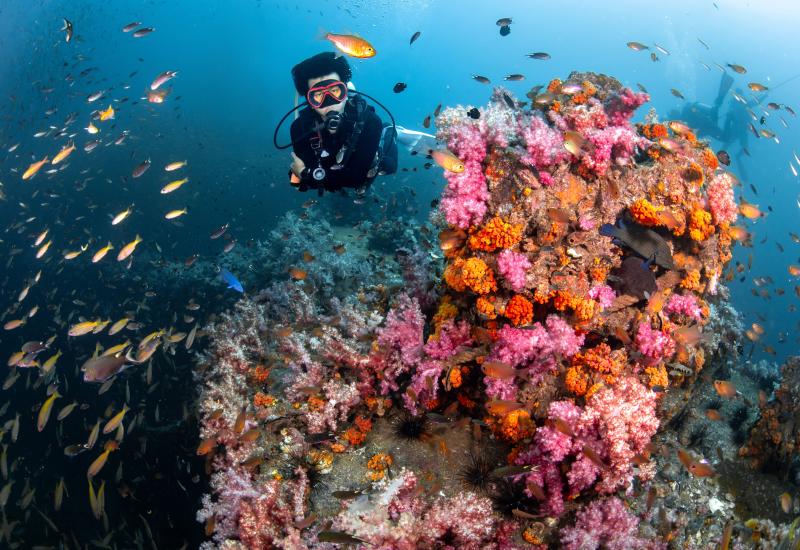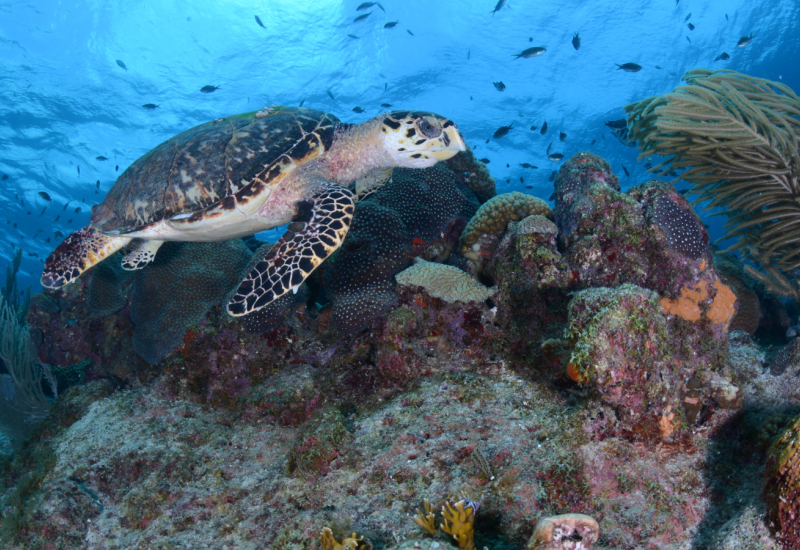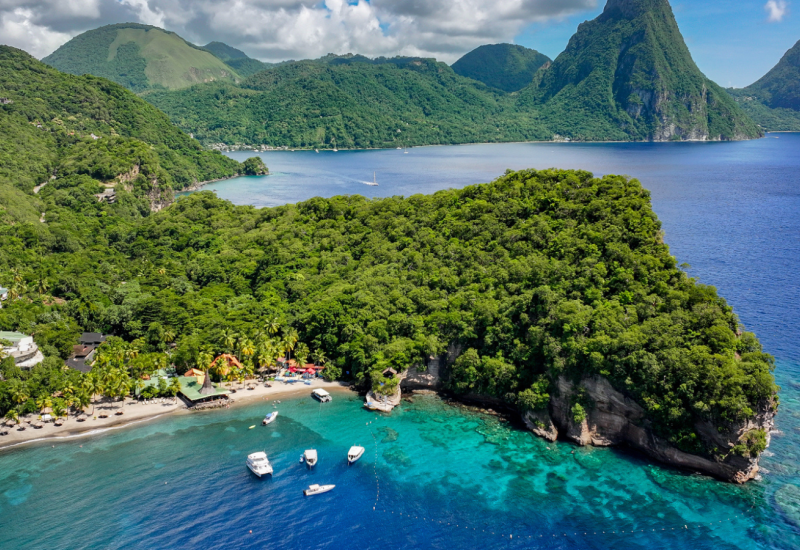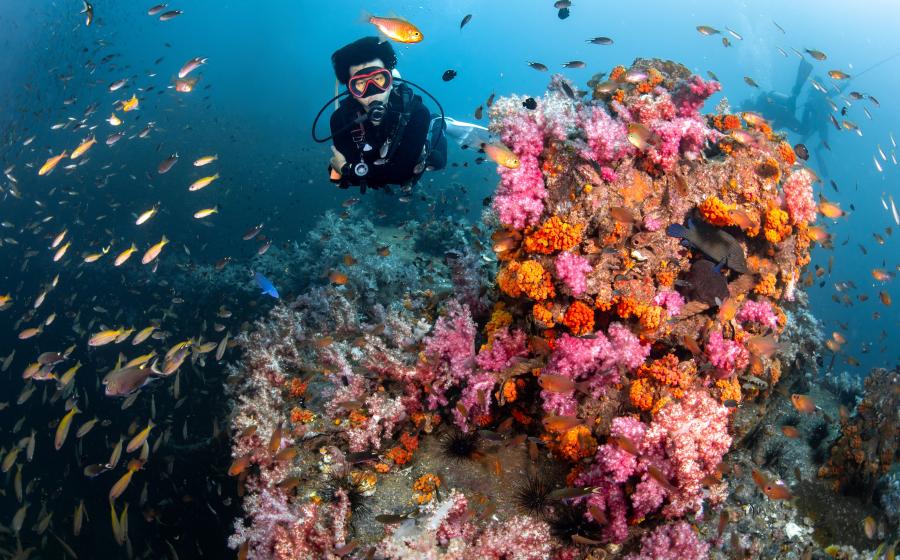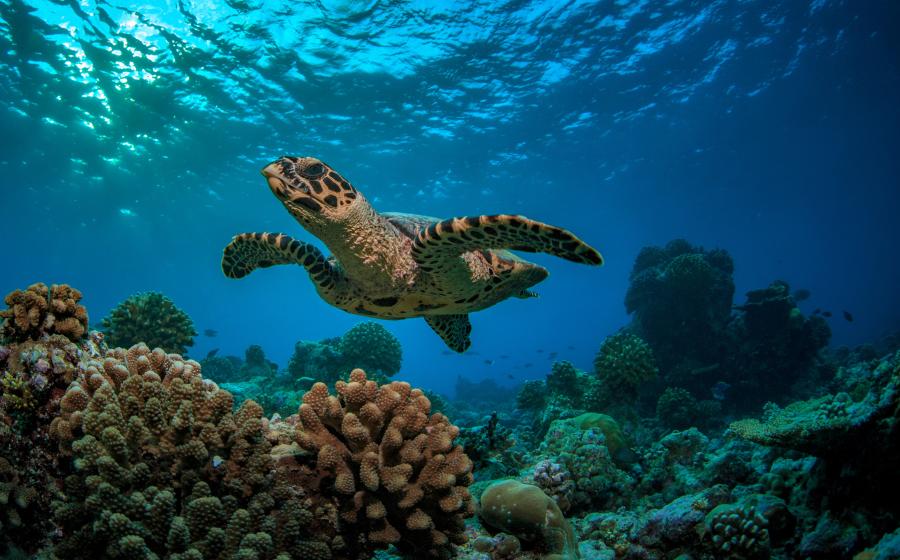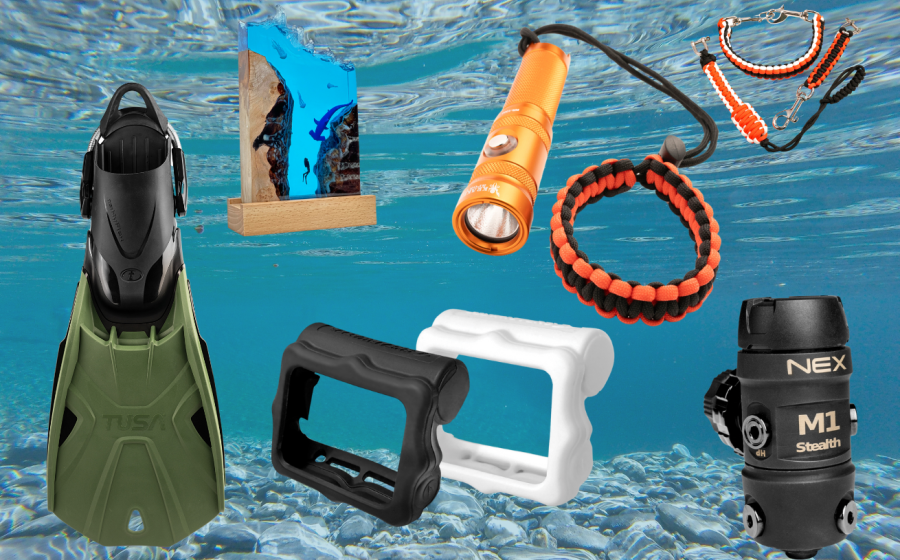The Joy of Swimming With Bali's Schools of Fish
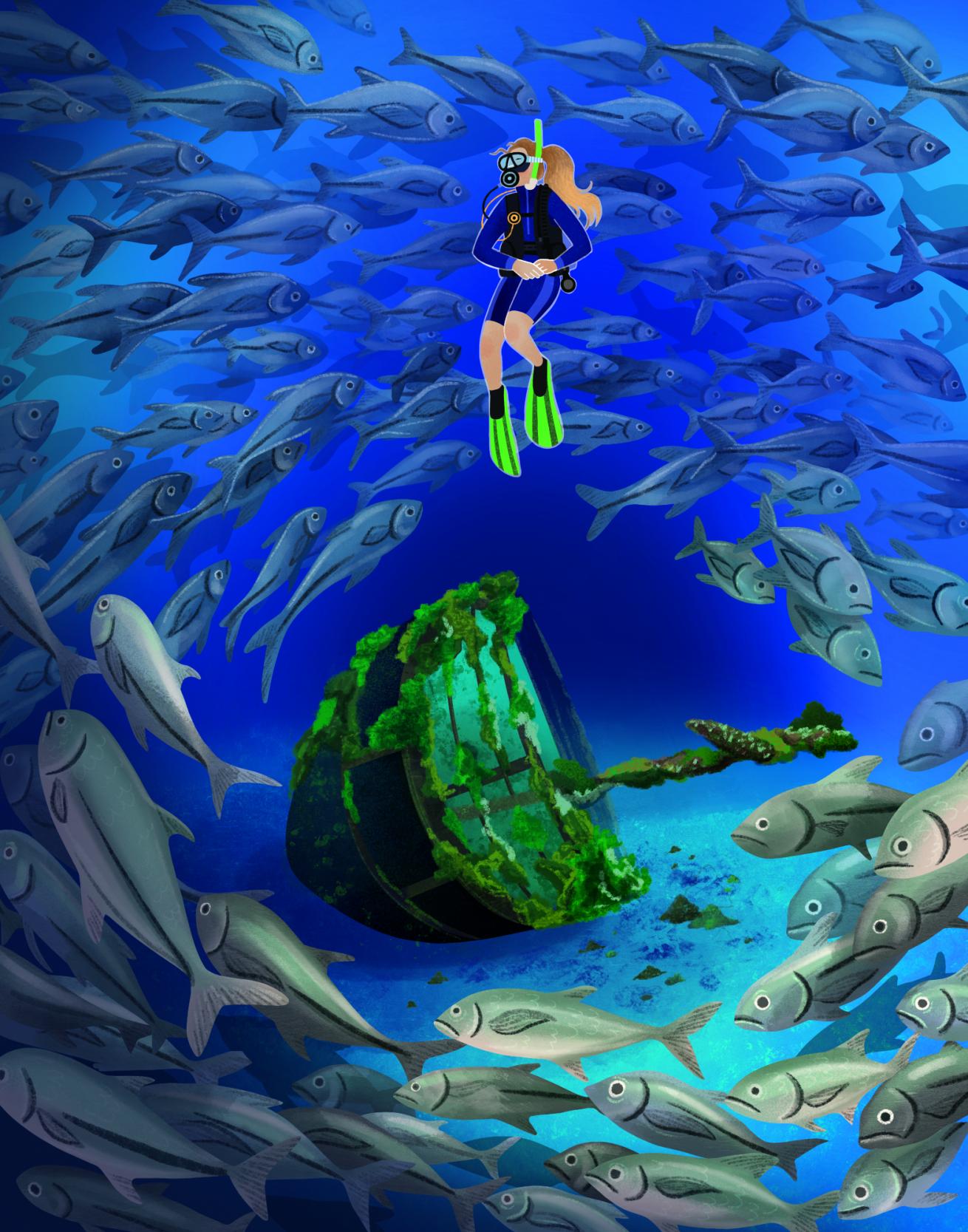
Lauren Rebbeck
When I’m not diving, I’m following my favorite divers, underwater photographers, ocean conservationists and divemasters on Instagram while dreaming of all the places I long to explore next. Sometimes, that place is less a destination and more a standout moment I long to revisit. Most recently, it was an editor of this magazine (Hi, Candice, aka @scubascribbles) who sent my underwater wanderlust reeling with a video detailing a certain phenomenon divers often get to experience—the feeling of being suspended, weightless in the ocean, among a school of swirling fish.
The video, recorded in the Galapagos, features waters as clear as a Florida spring—were they not clouded with the mercury-hued flow of hundreds of schooling jacks. It was clear, too, in the video that she was trailing not behind the fish but rather blissfully positioned within their scaly ranks. The post hit me with all the feels. “It’s as magical as swimming alongside a whale shark the size of a school bus,” Candice wrote in the caption. And I couldn’t agree more. There is nothing like diving in a massive school of fish.
Related Reading: More Than Muck: Another Side to Lembeh Strait, Indonesia
It brought me back to one of the most memorable shore dives of my life, many years ago, with Tauch Terminal Resort off the northeast coast of Bali. If you’ve been there, you likely know I’m gushing about the black-sand beach in Tulamben and the USAT Liberty wreck that sits just a short swim offshore. A former U.S. Army cargo ship, Bali’s most famous and accessible wreck has a story as fascinating as its fish life.
Torpedoed by Japanese forces in 1942, the Liberty sat beached in Tulamben for two decades before a volcanic eruption from Mount Agung in 1963 pushed it back into the ocean for a final send-off—burial at sea from a sacred source (Bali’s highest mountain, Agung is revered by the Balinese as the abode of the gods). Now roughly 100 feet offshore and resting almost parallel to the beach on its starboard side in the sand, the wreck’s stern can be explored in less than 20 feet of water. That’s where I first found bliss in a vortex of swimming fish.
Related Reading: A Local's Guide to Diving in Ireland
There were scores of garden eels, shimmering fusiliers, clownfish guarding anemones galore and even my alltime favorite juvenile fish—a harlequin sweetlips—around the wreck. But as soon as I saw the cloud of jacks hovering over it, up into the water column I finned.
Inserting yourself into a school of fish that cleaves like a calving glacier at your advances is a singular experience. I slowed my movements, barely finning, blowing my bubbles out as slowly and gently as was safe, as the fish reformed into a school around me. I was in the fold, my favorite place. Tornadic above but calm as the eye of a hurricane inside, it’s a high I’ll chase as long as I’m diving.

